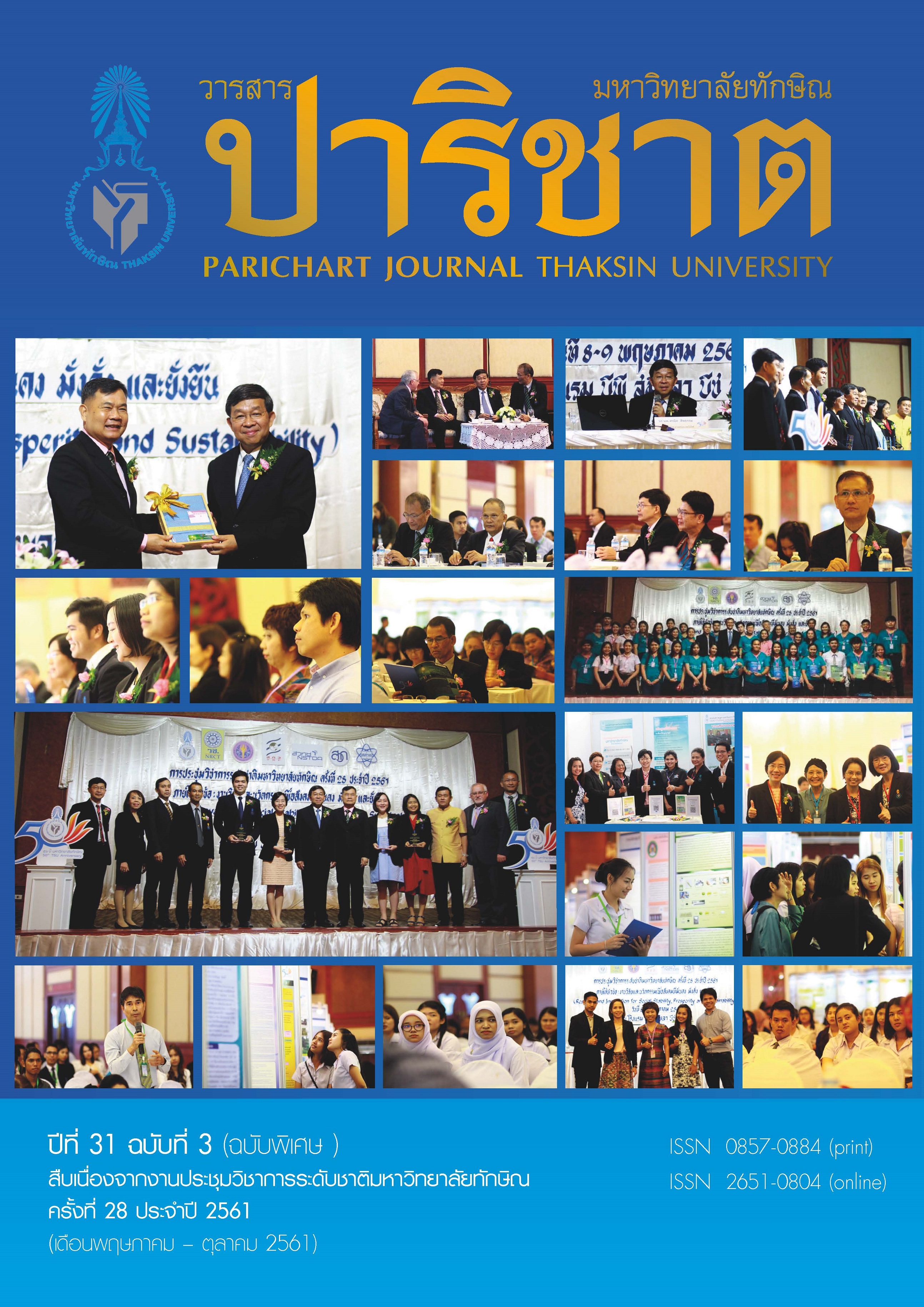A Study of Banana Stalk Carving Patterns by Local Craftsmen around Songkhla Lake
Main Article Content
Abstract
The research aimed to study and collect data on types, patterns, carving procedures, local
craftsmen facts, identity, values and importance of banana stalk carving by local craftsmen around the
Songkhla Lake. The research was a qualitative study and the results were presented in descriptive
analysis. The research found that, there were 4 types of designs of banana stalk carving; Krueng design
(Lai Krueng), Nor design (Lai Nor), Sao design (Lai Sao), and Pid Moom design (Lai Pid Moom). Regarding
forms, they were classified into 2 forms; Thai design form (Lai-Thai) and applied design form (Lai Pradit).
There are 4 steps in banana stalk carving procedures; 1) preparing banana stalks, 2) carving, 3) keeping
carved banana stalk, and 4) decorating. For number of craftsmen, there were 35 local craftsmen residing
around the Songkhla Lake - 26 from Songkhla, 6 from Pattalung and 3 from Nakhon Sri Thammarat. The
identity of carved banana stalks could be seen through dominant role of it in decoration. The artistic
design was big, with emphasis on outer structure and space. Dying was not preferable. They came in
various designs and had economic, social and cultural value closely related to way of life of the people
around the Songkhla Lake. Banana stalk carving made people realize its value and importance leading
to learning, promotion and development, preservation and everlasting heritance of banana stalk carving
around the Songkhla Lake.

